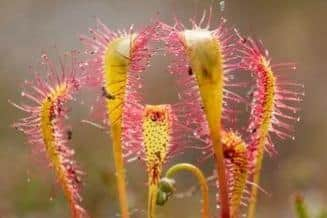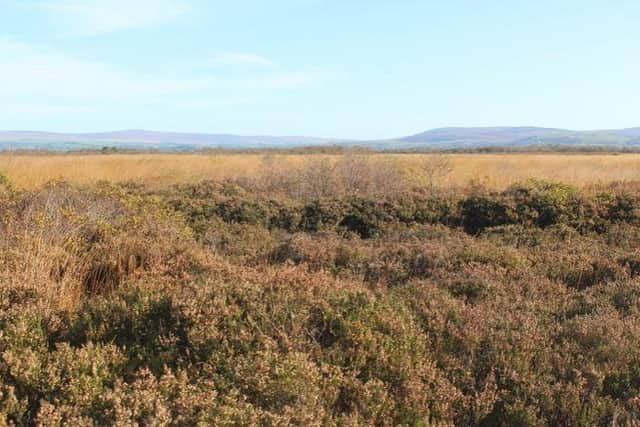£30,000 to reintroduce 'lost' plants at rare Lancashire peatland site
and live on Freeview channel 276
The money has been awarded from the Lancashire Environmental Fund for habitat restoration and plant reintroduction works at Winmarleigh Moss SSS near Garstang to bring back lost plant species including white beak sedge, bog asphodel, greater sundew and oblong-leaved sundew.
Winmarleigh Moss SSSI, is the North West’s best-preserved example of a rare lowland raised peat bog, but it has been subject to historic drainage and management for game bird shooting.


Advertisement
Hide AdAdvertisement
Hide AdThis has left the bog dried out and losing water into the surrounding deep agricultural drains.
Teams from the Lancashire Wildlife Trust are working to restore the bog, blocking drains and installing water retaining bunds, but for some species the damage has already been done.
What’s gone?
White beak sedge, bog asphodel and both greater and oblong-leaved sundew have been entirely lost from Winmarleigh Moss, and due to the isolated and fragmented nature of our remaining peatlands they simply wouldn’t make it back on their own.


What’s happening now?
Thanks for a £30,000 grant from the Lancashire Environment Fund including match funding from Whitecroft Lighting and Natural England, summer 2023 will see a total of 17,500 plants of these four species return.
Advertisement
Hide AdAdvertisement
Hide AdHelen Earnshaw, Lancashire Wildlife Trust Peatlands Programme Project Officer, said: “We are so excited to be bringing these lost species back to Winmarleigh Moss.
"We have lost 98 per cent of the lowland peatlands in our area so restoring our remaining fragments is just vital. Plants such as the carnivorous sundews are only found on bogs so we need to do all that we can to protect them.”
First steps
The first step in the project is to clear nine hectares of scrub vegetation from the planting area. When a peatland is dry or degraded, scrub such as willow and birch can take hold, shading out the remaining native peatland flora and causing further drying of the peat through water uptake from their roots.
Wildlife Trust staff will then work with specialist contractors and volunteer work parties to get the plants in the ground.
Advertisement
Hide AdAdvertisement
Hide AdPlanting by hand will significantly minimise disruption to the site.
Butterflies
The work will also support invertebrate populations especially in the case of white beak sedge and the large heath butterfly.
Winmarleigh Moss is one of the few places that this locally rare butterfly can be found, and improving their habitat would support the existing population and encourage it to spread to new areas, strengthening their population.
